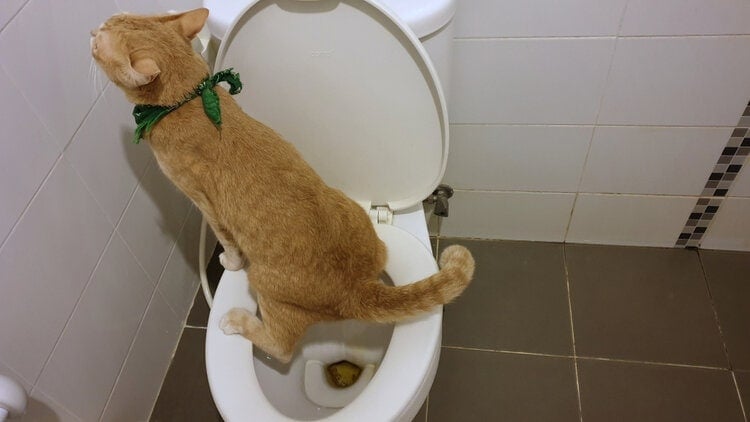The content following next relating to Can You Flush Cat Poop Down The Toilet? is incredibly enlightening. You should take a peek.

Introduction
As feline owners, it's important to be mindful of just how we deal with our feline close friends' waste. While it may appear hassle-free to flush pet cat poop down the bathroom, this practice can have detrimental consequences for both the atmosphere and human health and wellness.
Ecological Impact
Purging pet cat poop presents hazardous pathogens and parasites into the water supply, posturing a substantial threat to water ecological communities. These impurities can adversely impact marine life and concession water high quality.
Health Risks
Along with environmental concerns, purging feline waste can additionally present health threats to people. Feline feces may have Toxoplasma gondii, a bloodsucker that can create toxoplasmosis-- a possibly serious health problem, especially for expectant women and people with damaged immune systems.
Alternatives to Flushing
Luckily, there are safer and much more liable means to get rid of cat poop. Consider the complying with options:
1. Scoop and Dispose in Trash
One of the most usual method of getting rid of cat poop is to scoop it into an eco-friendly bag and toss it in the trash. Be sure to make use of a committed litter scoop and get rid of the waste quickly.
2. Usage Biodegradable Litter
Go with naturally degradable cat clutter made from products such as corn or wheat. These trashes are environmentally friendly and can be securely dealt with in the trash.
3. Hide in the Yard
If you have a yard, think about burying cat waste in a marked area away from vegetable gardens and water sources. Be sure to dig deep sufficient to prevent contamination of groundwater.
4. Install a Pet Waste Disposal System
Invest in a pet waste disposal system specifically made for feline waste. These systems utilize enzymes to break down the waste, decreasing odor and ecological effect.
Conclusion
Liable family pet ownership expands beyond supplying food and shelter-- it additionally involves appropriate waste administration. By avoiding flushing feline poop down the commode and opting for alternate disposal methods, we can reduce our environmental impact and secure human wellness.
Why Can’t I Flush Cat Poop?
It Spreads a Parasite
Cats are frequently infected with a parasite called toxoplasma gondii. The parasite causes an infection called toxoplasmosis. It is usually harmless to cats. The parasite only uses cat poop as a host for its eggs. Otherwise, the cat’s immune system usually keeps the infection at low enough levels to maintain its own health. But it does not stop the develop of eggs. These eggs are tiny and surprisingly tough. They may survive for a year before they begin to grow. But that’s the problem.
Our wastewater system is not designed to deal with toxoplasmosis eggs. Instead, most eggs will flush from your toilet into sewers and wastewater management plants. After the sewage is treated for many other harmful things in it, it is typically released into local rivers, lakes, or oceans. Here, the toxoplasmosis eggs can find new hosts, including starfish, crabs, otters, and many other wildlife. For many, this is a significant risk to their health. Toxoplasmosis can also end up infecting water sources that are important for agriculture, which means our deer, pigs, and sheep can get infected too.
Is There Risk to Humans?
There can be a risk to human life from flushing cat poop down the toilet. If you do so, the parasites from your cat’s poop can end up in shellfish, game animals, or livestock. If this meat is then served raw or undercooked, the people who eat it can get sick.
In fact, according to the CDC, 40 million people in the United States are infected with toxoplasma gondii. They get it from exposure to infected seafood, or from some kind of cat poop contamination, like drinking from a stream that is contaminated or touching anything that has come into contact with cat poop. That includes just cleaning a cat litter box.
Most people who get infected with these parasites will not develop any symptoms. However, for pregnant women or for those with compromised immune systems, the parasite can cause severe health problems.
How to Handle Cat Poop
The best way to handle cat poop is actually to clean the box more often. The eggs that the parasite sheds will not become active until one to five days after the cat poops. That means that if you clean daily, you’re much less likely to come into direct contact with infectious eggs.
That said, always dispose of cat poop in the garbage and not down the toilet. Wash your hands before and after you clean the litter box, and bring the bag of poop right outside to your garbage bins.
https://trenchlesssolutionsusa.com/why-cant-i-flush-cat-poop/

I hope you liked our part on How to Dispose of Cat Poop and Litter Without Plastic Bags. Thanks a lot for taking the time to read through our posting. Please set aside a second to share this post if you enjoyed it. We love reading our article about How to Dispose of Cat Poop and Litter Without Plastic Bags.
Show Details